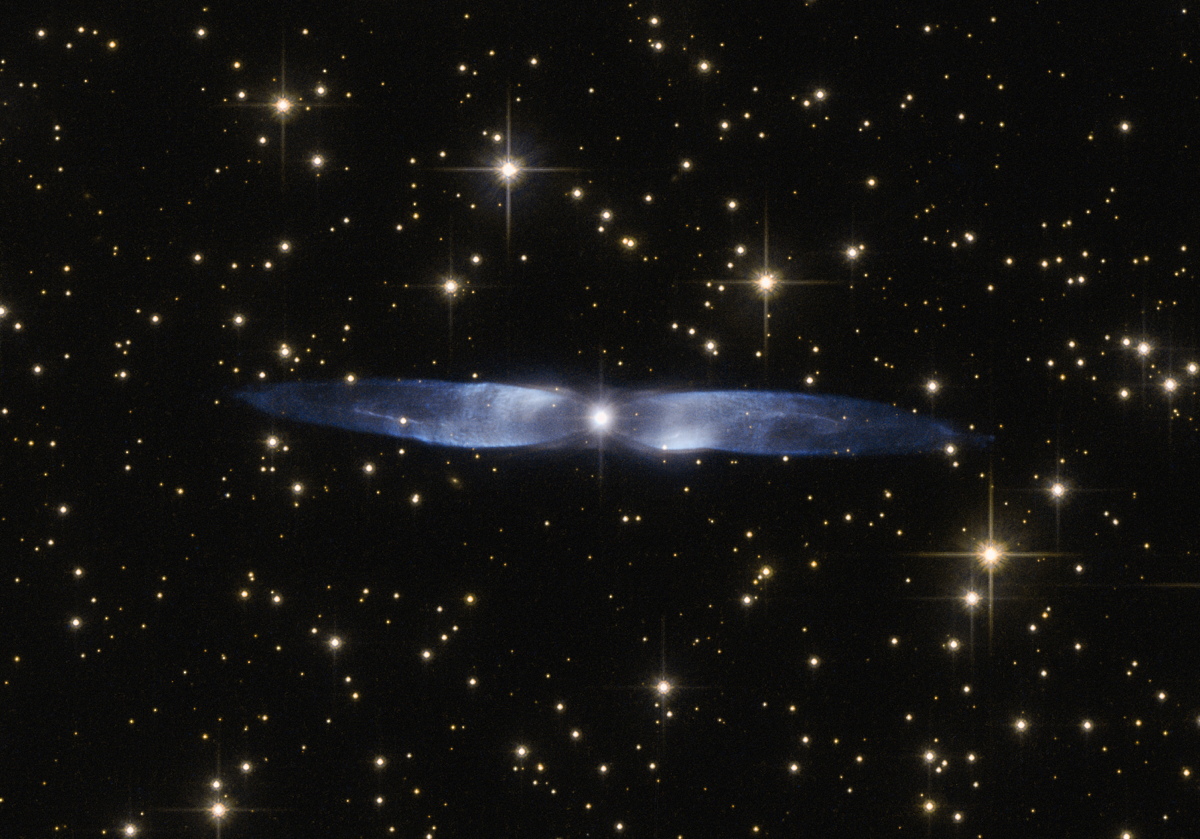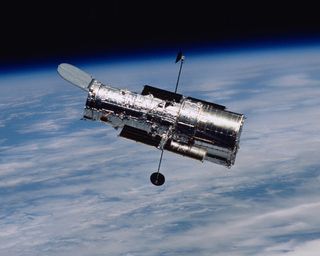'Hen's Wings' Glow Blue in Enchanting Hubble Telescope Image

The glowing, symmetrical wings of the Hen 2-437 nebula shine in luminescent blue in a new image obtained by the Hubble Space Telescope.
Hen 2-437 is in a faint northern constellation called Vulpecula (the fox), which is located near Cygnus and Pegasus. The object was first found in 1946 by Rudolph Minkowski, who later discovered the more famous M2-9 Twin Jet Nebula.
"As shown by its remarkably beautiful appearance, Hen 2-437 is a bipolar nebula — the material ejected by the dying star has streamed out into space to create the two icy-blue lobes pictured here," European Space Agency officials said in a statement.
Hen 2-437 is known as a planetary nebula, which is one of the late stages in the lifetime of low-mass stars similar in size to the sun. When a star is in that stage, it grows into a red giant star and then sheds its outer layers into space. As fusion in the core ceases, the star remnants slowly cool as a white dwarf.

Although "planetary" is in the term "planetary nebula," the nebula is a collection of gas and dust and does not have anything to do with planet formation. The name is a misnomer based on observations by astronomer William Herschel, who discovered Uranus in 1781. He thought the blue-green tint of planetary nebulas he observed resembled the planet's hue.
Roughly 3,000 planetary nebulas have been discovered so far. Some of the more famous examples of these nebulas include the Ring Nebula (NGC 6720) in the constellation Lyra, and the Cat's Eye Nebula (NGC 6543) in the constellation Draco. Both of these nebulas were also imaged by the Hubble Space Telescope over the years.
Follow Elizabeth Howell @howellspace, or Space.com @Spacedotcom. We're also on Facebook and Google+. Original article on Space.com.
Get the Space.com Newsletter
Breaking space news, the latest updates on rocket launches, skywatching events and more!
Join our Space Forums to keep talking space on the latest missions, night sky and more! And if you have a news tip, correction or comment, let us know at: community@space.com.

Elizabeth Howell (she/her), Ph.D., was a staff writer in the spaceflight channel between 2022 and 2024 specializing in Canadian space news. She was contributing writer for Space.com for 10 years from 2012 to 2024. Elizabeth's reporting includes multiple exclusives with the White House, leading world coverage about a lost-and-found space tomato on the International Space Station, witnessing five human spaceflight launches on two continents, flying parabolic, working inside a spacesuit, and participating in a simulated Mars mission. Her latest book, "Why Am I Taller?" (ECW Press, 2022) is co-written with astronaut Dave Williams.











